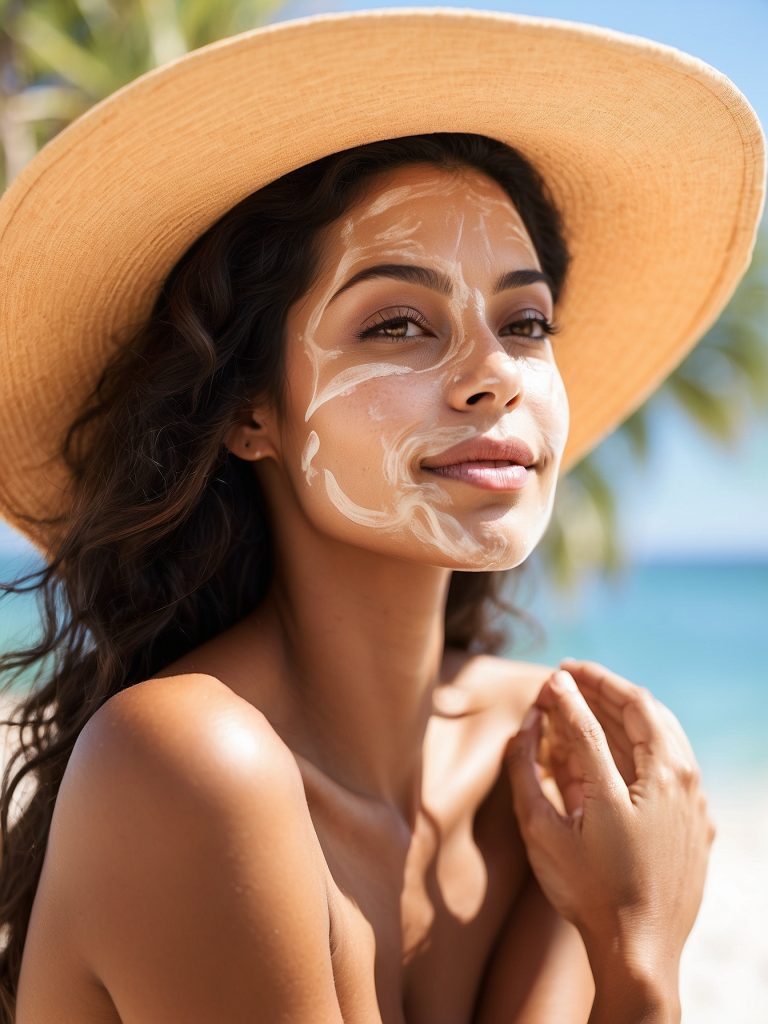
Exposure to the sun is both invigorating and potentially harmful to our skin. While sunlight is a vital source of Vitamin D, its ultraviolet (UV) rays can cause lasting damage. Understanding how to protect and care for sun-exposed skin is pivotal in maintaining a healthy complexion and reducing the risk of long-term issues such as premature aging and skin cancers.
The Impact of Sun Exposure on Skin Health
Sun exposure triggers the production of melanin, our skin’s pigment, resulting in a tan. However, this process also leads to the breakdown of collagen and elastin, causing wrinkles, fine lines, and sagging skin over time. Prolonged and unprotected sun exposure can heighten the risk of skin cancers, including melanoma, the deadliest form.
Protective Measures for Sun-Exposed Skin
- Sunscreen: Apply a broad-spectrum sunscreen with at least SPF 30 before going outdoors. Reapply every two hours, or more frequently if swimming or sweating.
- Cover Up: Wear protective clothing, including hats, sunglasses, and long-sleeved shirts when exposed to direct sunlight for extended periods.
- Seek Shade: Minimize sun exposure during peak hours, typically between 10 a.m. and 4 p.m.
- Stay Hydrated: Drink plenty of water to maintain skin hydration, especially in hot and sunny conditions.
- Skin Care Routine: Incorporate skincare products containing antioxidants and moisturizers to replenish and protect the skin.
- Regular Check-ups: Conduct self-examinations for any unusual moles or skin changes and seek professional dermatological assessments routinely.
Treatment and Recovery
If sun damage occurs, several treatment options can help rejuvenate the skin:
- Topical Treatments: Prescription creams and ointments may help reduce signs of sun damage, such as fine lines and discoloration.
- Laser Therapy: Intense Pulsed Light (IPL) or laser treatments can target specific skin issues caused by sun exposure, such as age spots or broken capillaries.
- Chemical Peels: This procedure involves applying a chemical solution to the skin to remove damaged outer layers, improving texture and appearance.
- Microneedling: A minimally invasive procedure that stimulates collagen production, aiding in the repair of sun-damaged skin.
Q&A Section
1. What are the immediate effects of sun exposure on the skin?
- Immediate effects can include sunburn, redness, inflammation, and in severe cases, blistering.
2. How does sunscreen protect the skin?
- Sunscreen acts as a barrier, preventing harmful UV rays from penetrating the skin. It reduces the risk of sunburn, premature aging, and skin cancers.
3. Can dark-skinned individuals get sunburnt?
- Yes, while darker skin tones have more natural protection against UV rays, they can still experience sunburn and are susceptible to sun damage and skin cancer.
4. How often should I get my skin checked by a dermatologist?
- It’s recommended to have a full-body skin check at least once a year. However, if you notice any changes in your skin or moles, consult a dermatologist promptly.
5. Are there natural remedies for soothing sunburn?
- Aloe vera, cool compresses, and moisturizers containing soothing ingredients like oatmeal or chamomile can help alleviate sunburn discomfort.
6. Can I reverse sun damage on my skin?
- While you can’t completely reverse sun damage, various treatments and skincare regimens can significantly improve the appearance and health of sun-damaged skin.
Understanding the significance of protecting sun-exposed skin and adopting proactive measures is crucial for maintaining skin health and minimizing long-term damage. Prioritizing sun protection and adopting a comprehensive skincare routine can help preserve your skin’s vitality and radiance for years to come.
Leave a Reply